Jason Schneider
the Camera Collector
Creative Photography at a Time of Social Distancing
As the world contracts in a protective crouch, you can expand it by picking up your camera!
By Jason Schneider
With large sections of the economy curtailed, millions of people sheltering in place, keeping a safe 6-foot distance from other humans, and wearing protective masks in public, it’s hard to imagine that now is a great time for creative photography—but it is! Taking the creative approach entails exploring new subject categories, redefining your objectives, and embracing fresh perspectives, all of which can expand your creative vision enormously. By focusing on the possibilities rather than the restrictions you can elevate your entire creative process and become a better, more versatile photographer. Letting your creative juices flow is also an effective antidote for isolation, anxiety, and depression, and a great way to stay sane and reasonably happy in challenging times. Here are some suggestions worth considering.
Suitable Subjects: They’re closer than you think
With most sporting events, shows, and concerts cancelled, and street and commercial activity reduced to a bare minimum in many places, certain types of subjects are now either non-existent or off limits. However, as an acclaimed photographer and teacher once told me, “If you can’t find a compelling photograph within 10 feet of your present location, you’re just not looking hard enough.”
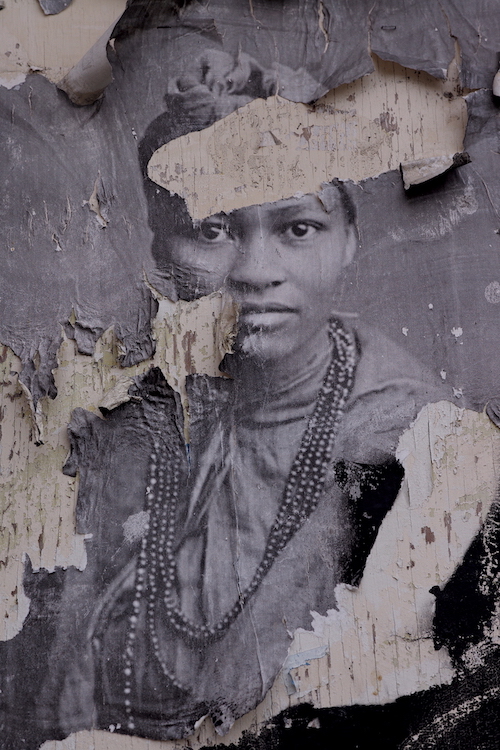
Found Street Art: Torn Poster
Seeing familiar things in a new light is a good place to start and there are countless picture possibilities right in your own home, none of which typically require social distancing. For example, the people you live with and see every day—spouses, partners, kids, roommates, etc.—can make great portrait subjects, either posed formally by window light, or engaged in normal domestic activities like baking a pie or fixing the kitchen sink. Pets and people interacting with their pets can make charming subjects, and so can the flowers and shrubs in your garden, or the gritty urban landscape framed by your fire escape. No matter how constricted your actual space may be, the trick is to transcend it by opening wide your mind’s eye and perceiving it as a limitless field of creative visual opportunities. With practice anyone can attain this mindset, and the resulting images can be truly astonishing.
8 Great Genres for No-contact Imaging
In general, social distancing protocols need not be strictly maintained when you’re shooting pictures of inanimate objects or animals, but be sure to carry protective gear (masks, surgical gloves etc.) so you can put it on if you encounter people on a nature trail, in the woods, in a park, walking down the street, etc. Note: some animals, including wild and domestic cats, dogs, etc. have likely caught the Covid-19 virus from infected humans, but they typically recover quickly, and the general scientific consensus is that they can’t re-transmit the virus to humans.
1. Nature and wildlife: The great outdoors is a wonderful place to take pictures of wildflowers, trees, birds, insects, and of course animals ranging from squirrels and chipmunks to deer, elk, moose and bears. To keep a safe distance when shooting aggressive species, and to capture compelling pictures of birds, use a long telephoto or tele-zoom lens with an equivalent focal length of 135mm or longer. Always carry a cell phone (and make sure you can get a signal!), always let someone back home know exactly where you plan to be, hike with at least one other person if possible, and carry a first aid kit.
2. Architecture: Buildings ranging from municipal structures like courthouses, town halls, and post offices, to homes, barns, and farmhouses, to bridges, monuments, and walk-ways, can all make great subjects. The fact that foot and automobile traffic is now reduced lets you capture these subjects in their pristine glory with fewer distracting elements. Lenses ranging from ultra-wide angles to super-telephotos can capture compelling architectural perspectives, but with longer lenses the dreaded keystone effect you get when pointing your camera upward is less obvious. The historical districts of old towns are great places to find grand old buildings well worth photographing, but don’t forget to scout out such things as iconic storefronts, classic ‘50s diners, and neo-deco structures of the ‘30s and ‘40s. Using a tripod will let you shoot at moderate to small apertures and low ISOs to maximize depth of field, detail, and overall image quality. And if you’re lucky enough to have a PC (perspective-correction) lens with lateral and tilting adjustments, now is the time to use it to capture distortion free architectural images.
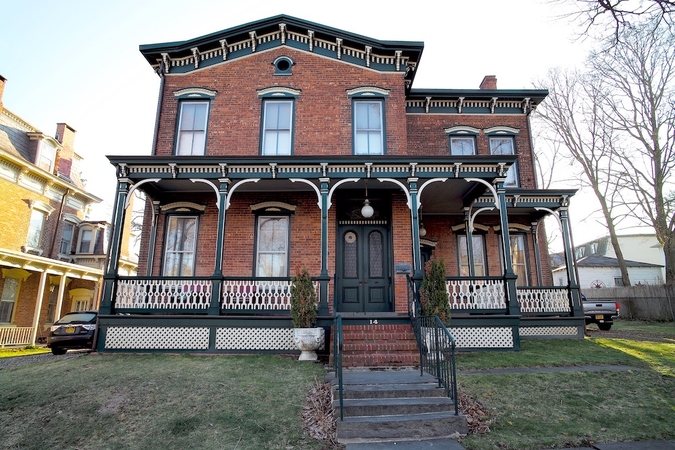
1873 Italianate Victorian House, Catskill, NY
3. People and portraits: Even with social distancing it’s still possible to shoot intimate people pictures at a safe distance. Savvy photographers often rely on fast moderate telephotos in the 85-105mm focal length range as their go-to portrait lenses and there’s a host of modern and vintage lenses in the 85-105mm focal length range that qualify. They allow you to capture frame filling headshots and head-and-shoulders portraits at safe shooting distances while minimizing apparent perspective distortion in close-ups. They also provide very shallow depth of field at their widest apertures, facilitating selective techniques such as isolating a sharply rendered subject against a pleasantly soft background. Since they effectively double the working (camera to subject) distance compared to normal lenses they not only fulfill current 6-foot “social distance” requirements, they also make the photographer less intrusive and intimidating—a big plus when taking portraits of skittish subjects like pets and little kids.
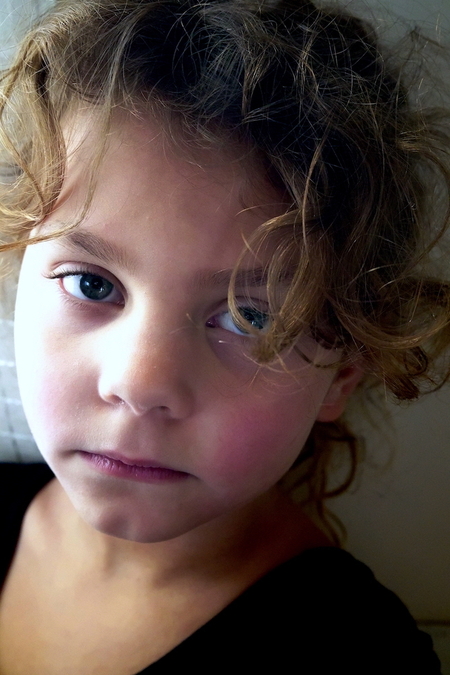
Daughter: Amelia No.6
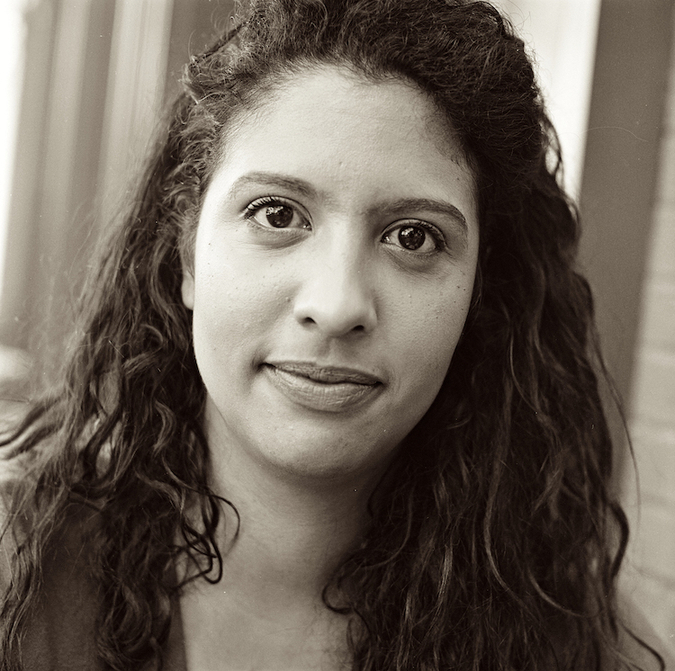
Sister: People sheltering with you at home make great subjects too
4. Still life images: The range of possible still life compositions is quite literally limitless—everything from the classic bowl of fruit to an assemblage of vintage workshop tools, to a collection of textiles in various colors and patterns. You can let your imagination run wild creating images in this time-honored traditional genre, and don’t forget to explore selective focus techniques by shooting at both wide and moderate apertures.
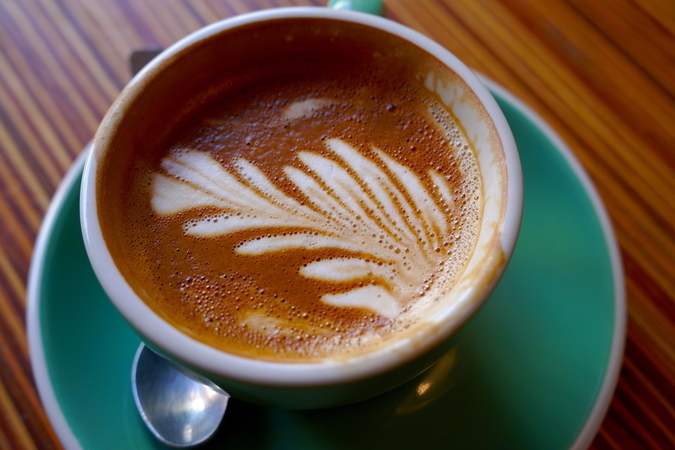
Macro Close-Up: Cappuccino
5. Interior décor: By all means break out your wide-angle, and ultra-wide-angle lenses to capture compelling images of the most visually fascinating rooms of your house, and don’t forget the kitchen, bathroom, and workshop. If you have an ironic sense of humor even a cluttered attic or basement can make an amusing picture practically anyone can relate to. While many museums and historic homes are now closed virtually any interior space you’re permitted to enter is fair game, so long as you can maintain your social distance, picture taking is permitted, and you don’t obstruct others.
6. Macro close-ups: Originally “macro” referred to lenses with the ability to capture images larger than life-size (1:1) on the film or sensor, but it’s now a general term for lenses (including zooms) that can focus down to about 1:4 or closer. With a macro lens it’s easy to capture engaging close-ups of practically anything. Popular subjects include stamps, coins, currency, jewelry, insects dead or alive, butterfly wings, small plants and flowers, etc. In cases where social distancing doesn’t apply you can also create striking frame filling close-ups of people and animals, showcasing the details of their eyes and subtle facial expressions. Try this technique with babies, toddlers, and pets and you can create images you’ll treasure in years to come. Any lens with close-focusing ability you have on hand can certainly be pressed into service, but a medium telephoto prime that can focus down to 1:1 is a great choice because it’s a portrait telephoto and a macro lens rolled into one. Two stellar examples: the 105mm f/2.8 Sigma EX DG OS HSM Macro, and the 90mm f/2.8 Tamron Di Macro 1:1 VC USD, both of which have built-in image stabilization to minimize the effects of handheld camera shake.
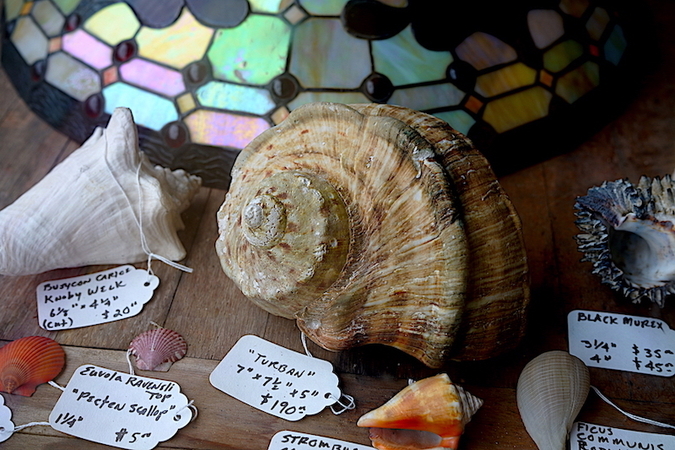
Macro Still Life Display
7. Self-portraits: This classic art form goes back hundreds of years and is more popular than ever now that taking portraits of others can be problematic. The contemporary version, the selfie, is typically shot with a cell phone camera, and may include a friend or celebrity posed alongside the person taking the picture. Technically you’ll get much better results by using a “real” camera, especially one that provides a selfie mode or has a flip-down LCD that lets you compose the picture from posing position. However, it’s easy to shoot excellent self-portraits with any camera that has built-in self-timer or remote release capability. Just mount the camera on a tripod, check the lighting, composition, and focus using a surrogate person or a suitable substitute object, move yourself into the exact same position, and take the picture using either the self-timer or (preferably) the remote release. Take several shots, varying your expression and pose and pick the ones you like best. I’ve found that manual focus and moderate apertures (which give greater depth of field) work best for self-portraits, but by all means experiment with wider apertures and (single shot) AF to achieve the effect you want.
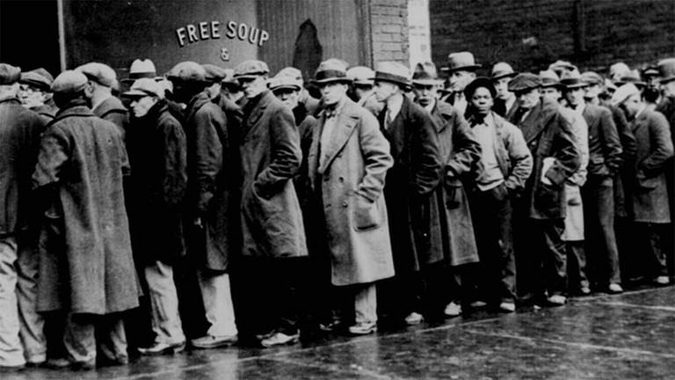
White Angel Breadline in Great Depression, public domain FSA photograph by Dorothea Lange
8. Documenting the pandemic: Keeping your distance from people while documenting the greatest worldwide catastrophe of our times poses many challenges but it’s a worthwhile endeavor for historical reasons and a great way to express your creative insight. To get an idea of the kind of images that will capture the zeitgeist and resonate with future generations, take a look at the timeless images of the Great Depression of the ‘30s created under the auspices of the FSA (Farm Security Administration) by such renowned photographers as Dorothea Lange, Arthur Rothstein, Walker Evans, Carl Mydans, Marion Post Wolcott, and many others. An image of masked grocery shoppers standing in line 6 feet apart is analogous to the searing FSA photographs of lines of dispirited unemployed men and women standing in the breadlines of 1932. Other documentary suggestions: A gallery of “closed for business” signs with hopeful messages about re-opening, a portfolio of rainbow signs adorned with messages of solidarity and hope, a picture collection of posters praising doctors, nurses, EMTs and store clerks for their courageous service, coverage of people on their porches or at their windows holding nightly demonstrations cheering medical workers, and cute but harrowing pictures of entire families including little kids, wearing protective masks. Practically any camera/lens combo is suitable for documentary photography but telephoto and zoom lenses in the 100-300mm-equivalent range will give you a closer view of the scene and enable you to pick out significant details of attire, expressions, interactions etc. without violating any protocols.
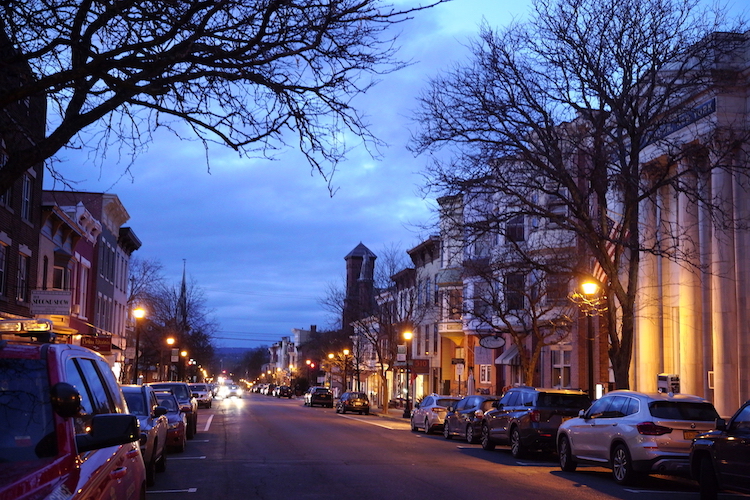
Warren Street deserted at dusk, Hudson New York
Disclaimer: While I’ve done my level best as a layman to provide accurate information that does not compromise anyone’s safety, I am not a medical professional and this article has not been vetted by certified medical experts. Neither I nor the publisher of this article can therefore accept any responsibility for the consequences of following any of the recommendations in this piece, which are offered solely as friendly suggestions. We strongly urge you to err on the side of caution and to comply with the requirements of local authorities in all cases. Good shooting and stay safe and healthy!
As the world contracts in a protective crouch, you can expand it by picking up your camera!
By Jason Schneider
With large sections of the economy curtailed, millions of people sheltering in place, keeping a safe 6-foot distance from other humans, and wearing protective masks in public, it’s hard to imagine that now is a great time for creative photography—but it is! Taking the creative approach entails exploring new subject categories, redefining your objectives, and embracing fresh perspectives, all of which can expand your creative vision enormously. By focusing on the possibilities rather than the restrictions you can elevate your entire creative process and become a better, more versatile photographer. Letting your creative juices flow is also an effective antidote for isolation, anxiety, and depression, and a great way to stay sane and reasonably happy in challenging times. Here are some suggestions worth considering.
Suitable Subjects: They’re closer than you think
With most sporting events, shows, and concerts cancelled, and street and commercial activity reduced to a bare minimum in many places, certain types of subjects are now either non-existent or off limits. However, as an acclaimed photographer and teacher once told me, “If you can’t find a compelling photograph within 10 feet of your present location, you’re just not looking hard enough.”

Found Street Art: Torn Poster
Seeing familiar things in a new light is a good place to start and there are countless picture possibilities right in your own home, none of which typically require social distancing. For example, the people you live with and see every day—spouses, partners, kids, roommates, etc.—can make great portrait subjects, either posed formally by window light, or engaged in normal domestic activities like baking a pie or fixing the kitchen sink. Pets and people interacting with their pets can make charming subjects, and so can the flowers and shrubs in your garden, or the gritty urban landscape framed by your fire escape. No matter how constricted your actual space may be, the trick is to transcend it by opening wide your mind’s eye and perceiving it as a limitless field of creative visual opportunities. With practice anyone can attain this mindset, and the resulting images can be truly astonishing.
8 Great Genres for No-contact Imaging
In general, social distancing protocols need not be strictly maintained when you’re shooting pictures of inanimate objects or animals, but be sure to carry protective gear (masks, surgical gloves etc.) so you can put it on if you encounter people on a nature trail, in the woods, in a park, walking down the street, etc. Note: some animals, including wild and domestic cats, dogs, etc. have likely caught the Covid-19 virus from infected humans, but they typically recover quickly, and the general scientific consensus is that they can’t re-transmit the virus to humans.
1. Nature and wildlife: The great outdoors is a wonderful place to take pictures of wildflowers, trees, birds, insects, and of course animals ranging from squirrels and chipmunks to deer, elk, moose and bears. To keep a safe distance when shooting aggressive species, and to capture compelling pictures of birds, use a long telephoto or tele-zoom lens with an equivalent focal length of 135mm or longer. Always carry a cell phone (and make sure you can get a signal!), always let someone back home know exactly where you plan to be, hike with at least one other person if possible, and carry a first aid kit.
2. Architecture: Buildings ranging from municipal structures like courthouses, town halls, and post offices, to homes, barns, and farmhouses, to bridges, monuments, and walk-ways, can all make great subjects. The fact that foot and automobile traffic is now reduced lets you capture these subjects in their pristine glory with fewer distracting elements. Lenses ranging from ultra-wide angles to super-telephotos can capture compelling architectural perspectives, but with longer lenses the dreaded keystone effect you get when pointing your camera upward is less obvious. The historical districts of old towns are great places to find grand old buildings well worth photographing, but don’t forget to scout out such things as iconic storefronts, classic ‘50s diners, and neo-deco structures of the ‘30s and ‘40s. Using a tripod will let you shoot at moderate to small apertures and low ISOs to maximize depth of field, detail, and overall image quality. And if you’re lucky enough to have a PC (perspective-correction) lens with lateral and tilting adjustments, now is the time to use it to capture distortion free architectural images.

1873 Italianate Victorian House, Catskill, NY
3. People and portraits: Even with social distancing it’s still possible to shoot intimate people pictures at a safe distance. Savvy photographers often rely on fast moderate telephotos in the 85-105mm focal length range as their go-to portrait lenses and there’s a host of modern and vintage lenses in the 85-105mm focal length range that qualify. They allow you to capture frame filling headshots and head-and-shoulders portraits at safe shooting distances while minimizing apparent perspective distortion in close-ups. They also provide very shallow depth of field at their widest apertures, facilitating selective techniques such as isolating a sharply rendered subject against a pleasantly soft background. Since they effectively double the working (camera to subject) distance compared to normal lenses they not only fulfill current 6-foot “social distance” requirements, they also make the photographer less intrusive and intimidating—a big plus when taking portraits of skittish subjects like pets and little kids.

Daughter: Amelia No.6

Sister: People sheltering with you at home make great subjects too
4. Still life images: The range of possible still life compositions is quite literally limitless—everything from the classic bowl of fruit to an assemblage of vintage workshop tools, to a collection of textiles in various colors and patterns. You can let your imagination run wild creating images in this time-honored traditional genre, and don’t forget to explore selective focus techniques by shooting at both wide and moderate apertures.

Macro Close-Up: Cappuccino
5. Interior décor: By all means break out your wide-angle, and ultra-wide-angle lenses to capture compelling images of the most visually fascinating rooms of your house, and don’t forget the kitchen, bathroom, and workshop. If you have an ironic sense of humor even a cluttered attic or basement can make an amusing picture practically anyone can relate to. While many museums and historic homes are now closed virtually any interior space you’re permitted to enter is fair game, so long as you can maintain your social distance, picture taking is permitted, and you don’t obstruct others.
6. Macro close-ups: Originally “macro” referred to lenses with the ability to capture images larger than life-size (1:1) on the film or sensor, but it’s now a general term for lenses (including zooms) that can focus down to about 1:4 or closer. With a macro lens it’s easy to capture engaging close-ups of practically anything. Popular subjects include stamps, coins, currency, jewelry, insects dead or alive, butterfly wings, small plants and flowers, etc. In cases where social distancing doesn’t apply you can also create striking frame filling close-ups of people and animals, showcasing the details of their eyes and subtle facial expressions. Try this technique with babies, toddlers, and pets and you can create images you’ll treasure in years to come. Any lens with close-focusing ability you have on hand can certainly be pressed into service, but a medium telephoto prime that can focus down to 1:1 is a great choice because it’s a portrait telephoto and a macro lens rolled into one. Two stellar examples: the 105mm f/2.8 Sigma EX DG OS HSM Macro, and the 90mm f/2.8 Tamron Di Macro 1:1 VC USD, both of which have built-in image stabilization to minimize the effects of handheld camera shake.

Macro Still Life Display
7. Self-portraits: This classic art form goes back hundreds of years and is more popular than ever now that taking portraits of others can be problematic. The contemporary version, the selfie, is typically shot with a cell phone camera, and may include a friend or celebrity posed alongside the person taking the picture. Technically you’ll get much better results by using a “real” camera, especially one that provides a selfie mode or has a flip-down LCD that lets you compose the picture from posing position. However, it’s easy to shoot excellent self-portraits with any camera that has built-in self-timer or remote release capability. Just mount the camera on a tripod, check the lighting, composition, and focus using a surrogate person or a suitable substitute object, move yourself into the exact same position, and take the picture using either the self-timer or (preferably) the remote release. Take several shots, varying your expression and pose and pick the ones you like best. I’ve found that manual focus and moderate apertures (which give greater depth of field) work best for self-portraits, but by all means experiment with wider apertures and (single shot) AF to achieve the effect you want.

White Angel Breadline in Great Depression, public domain FSA photograph by Dorothea Lange
8. Documenting the pandemic: Keeping your distance from people while documenting the greatest worldwide catastrophe of our times poses many challenges but it’s a worthwhile endeavor for historical reasons and a great way to express your creative insight. To get an idea of the kind of images that will capture the zeitgeist and resonate with future generations, take a look at the timeless images of the Great Depression of the ‘30s created under the auspices of the FSA (Farm Security Administration) by such renowned photographers as Dorothea Lange, Arthur Rothstein, Walker Evans, Carl Mydans, Marion Post Wolcott, and many others. An image of masked grocery shoppers standing in line 6 feet apart is analogous to the searing FSA photographs of lines of dispirited unemployed men and women standing in the breadlines of 1932. Other documentary suggestions: A gallery of “closed for business” signs with hopeful messages about re-opening, a portfolio of rainbow signs adorned with messages of solidarity and hope, a picture collection of posters praising doctors, nurses, EMTs and store clerks for their courageous service, coverage of people on their porches or at their windows holding nightly demonstrations cheering medical workers, and cute but harrowing pictures of entire families including little kids, wearing protective masks. Practically any camera/lens combo is suitable for documentary photography but telephoto and zoom lenses in the 100-300mm-equivalent range will give you a closer view of the scene and enable you to pick out significant details of attire, expressions, interactions etc. without violating any protocols.

Warren Street deserted at dusk, Hudson New York
Disclaimer: While I’ve done my level best as a layman to provide accurate information that does not compromise anyone’s safety, I am not a medical professional and this article has not been vetted by certified medical experts. Neither I nor the publisher of this article can therefore accept any responsibility for the consequences of following any of the recommendations in this piece, which are offered solely as friendly suggestions. We strongly urge you to err on the side of caution and to comply with the requirements of local authorities in all cases. Good shooting and stay safe and healthy!
These are strange times.
The empty streets, beaches, malls etc offer unique in our lifetime images.
More strange are so many people in masks and face coverings.
Societies are changing, at least for the short run.
It is up to photographers to document our COVID-19 world for history.
Stephen
The empty streets, beaches, malls etc offer unique in our lifetime images.
More strange are so many people in masks and face coverings.
Societies are changing, at least for the short run.
It is up to photographers to document our COVID-19 world for history.
Stephen

